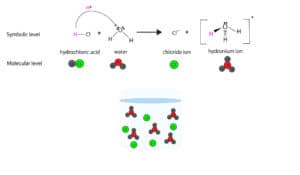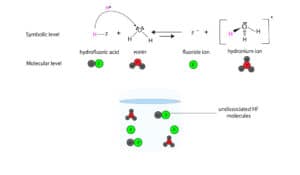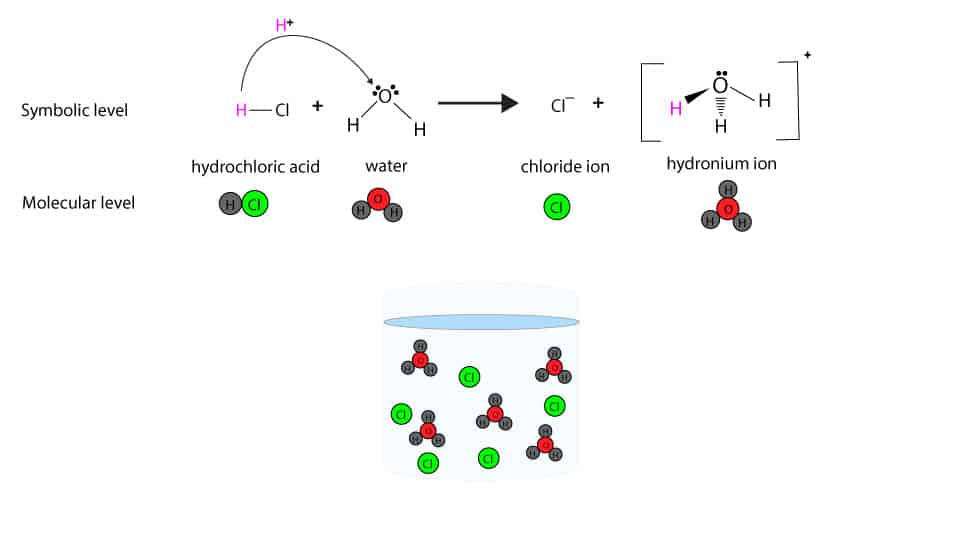What’s the difference between strong and weak electrolyte?
The difference is that a strong electrolyte dissociates completely in water, while a weak electrolyte partly dissociates. For instance, hydrochloric acid (HCl) and hydrofluoric acid (HF) dissociate in water to produce H+( these reactive H+ ions share a lone pair of electrons on the oxygen atom of water (H2O) to form the hydronium ion, H3O+. Therefore, we are more correct if we say that HCl and HF dissociate in water to produce H3O+)
If you test the conductivity of the same concentration of HCl and HF, you will notice that the light bulb of the conductivity tester glows brighter in the HCl solution than it glows in the HF solution. This difference in brightness is because of how well each chemical dissociates in water.
For instance, HCl normally dissociates 100% in water. Therefore, HCl is a strong electrolyte.
Here is a model showing how HCl dissociates in water

On the other hand, only a small fraction of HF molecules dissociates in water.
Here is a model showing how HF dissociates in water

As you can see, we have a longer arrow pointing towards the reactants and a shorter arrow pointing towards the products. The longer arrow means that the reverse reaction is preferred, and that the products easily combine to get back the reactants. On the other hand, the shorter arrow means that the forward reaction is not preferred, and that only a small fraction of HF dissociates in water.
Therefore, HF is a weak electrolyte.
Strong and weak electrolytes can also be applied to bases and other compounds that dissolve in water to produce ions. Examples of bases that are strong electrolytes include sodium hydroxide and many more. Examples of bases that are weak include ammonia and many more.
To read more about solutions that can conduct an electric current, click here.
